Moon Boot Services
A Moon Boot, also known as a CAM boot, is a carefully designed orthosis which serves to secure the foot and ankle and aid in rehabilitating certain injuries.
Orthotics Plus provides acute lower-limb rehabilitation services, including moon boot purchases (with warranty), fitting and ongoing Orthotic services.
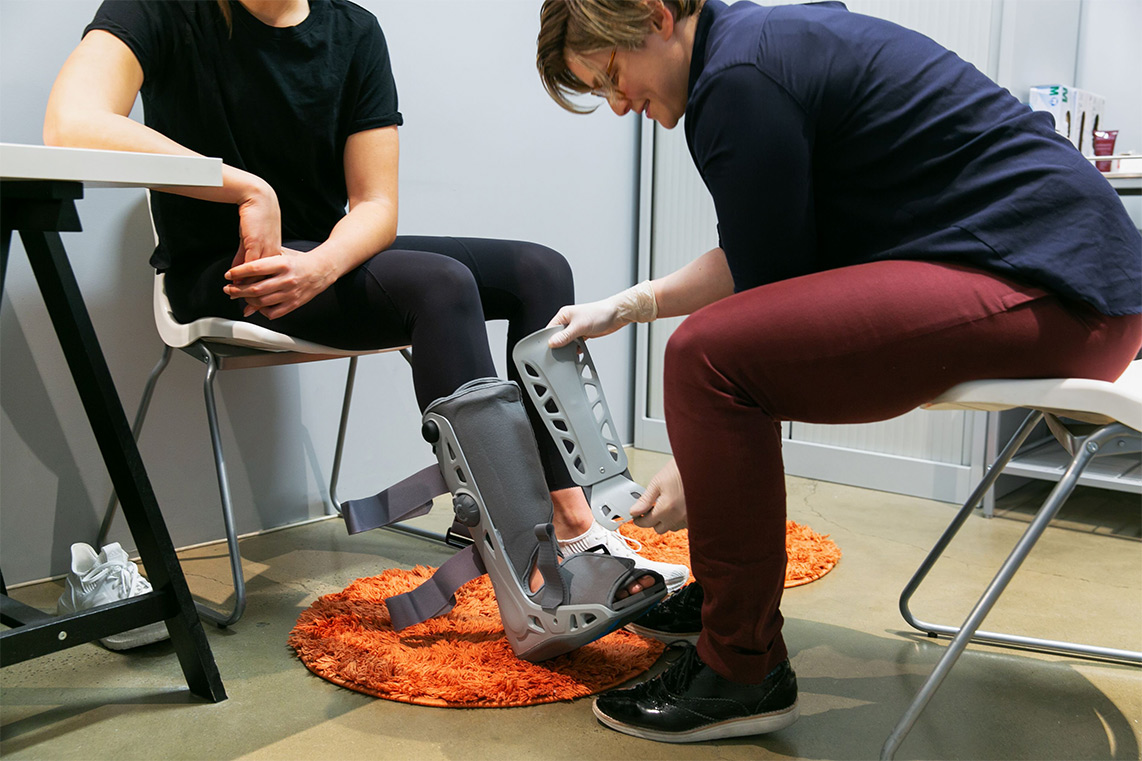
What Conditions Require a Moon Boot?
Moon boots / CAM boots can be appropriate for a range of injuries or conditions that affect the lower limb. The majority of injuries are caused by trauma (i.e. a fall). These injuries commonly include:
- Ankle fractures (i.e. distal fibula fracture)
- Talus fractures
- Calcaneal fractures
- Stress fractures
- Fifth metatarsal fractures
- Navicular fractures
- Cuboid fractures
- Tibialis posterior dysfunction
- Tendon rupture or disruption
- Toe fractures
- Lateral ligament injury (i.e. sprained ankle)
- Achilles tendon rupture
Moon boots may also be appropriate in cases of skeletal deformities, necrosis, osteoporosis and other complex conditions which Orthotics Plus is experienced with.
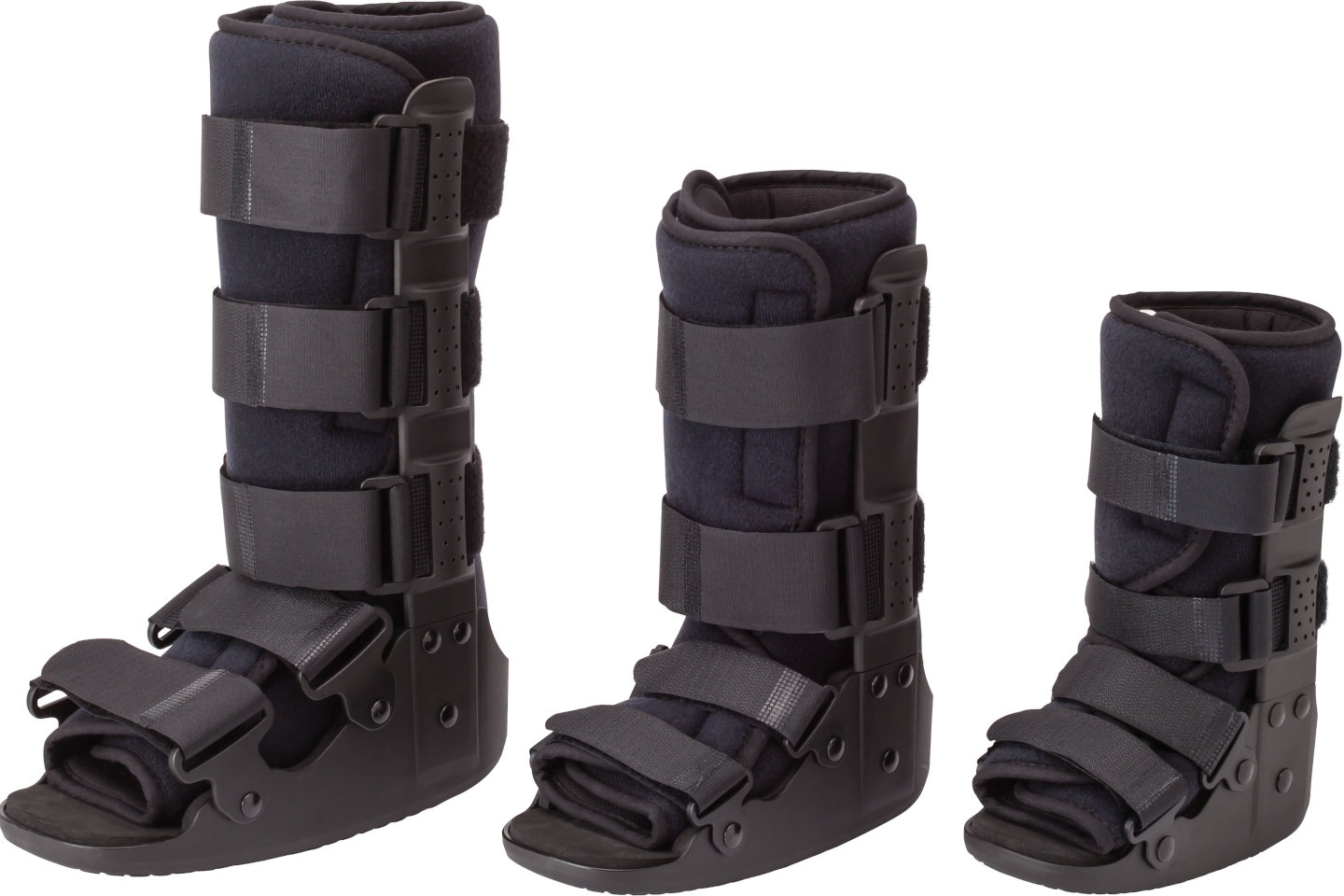
How a Moon Boot Works
A moon boot provides immobilisation which is beneficial for the long physiological process of skeletal reconstruction. The moon boot immobilises the body-part in place at an appropriate angle and allows the injury to heal.
Healing of the bone is a complex process which can be simplified as four primary stages:
Stage 1
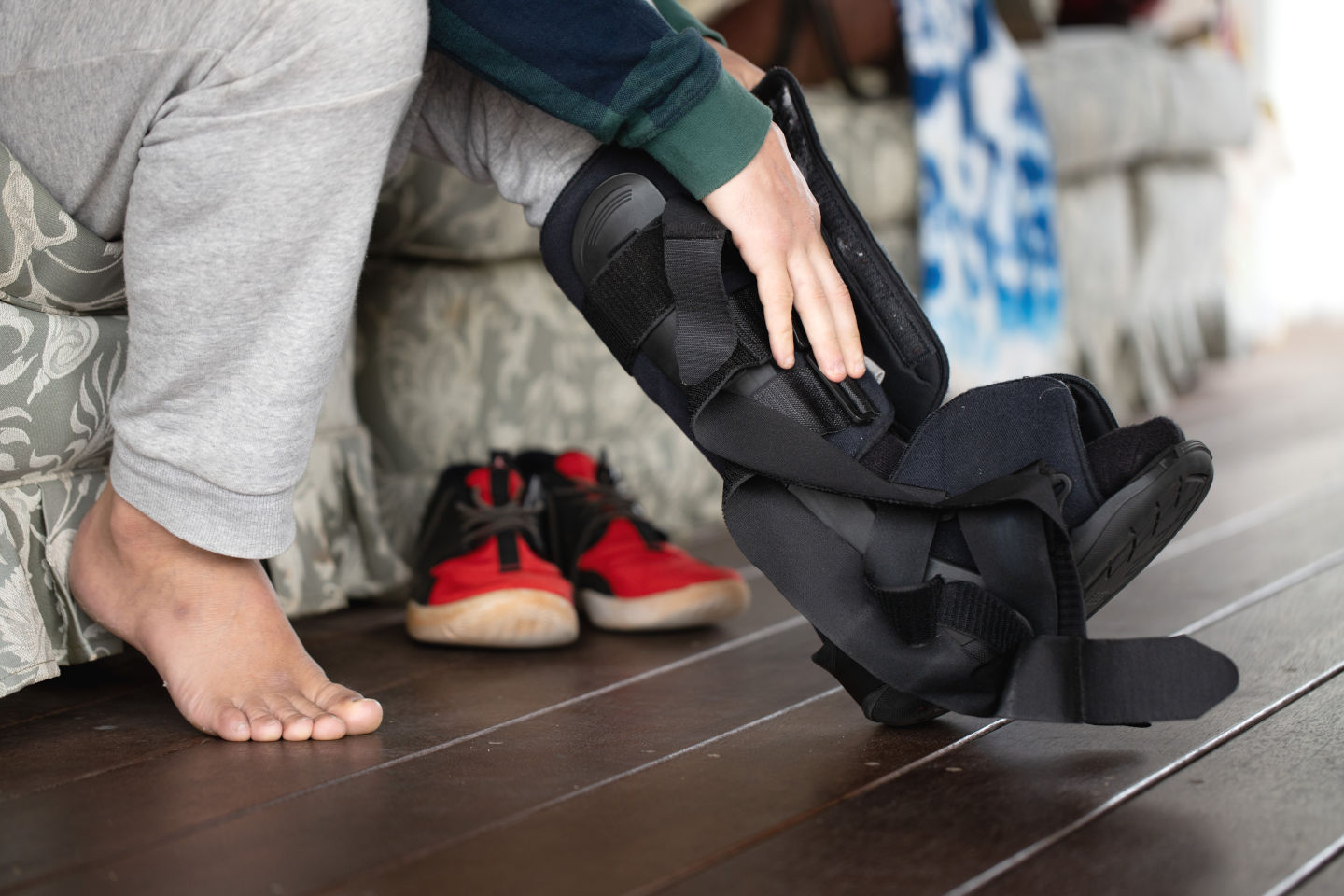
This is the inflammatory phase, during which there is acute damage and bleeding
Stage 2
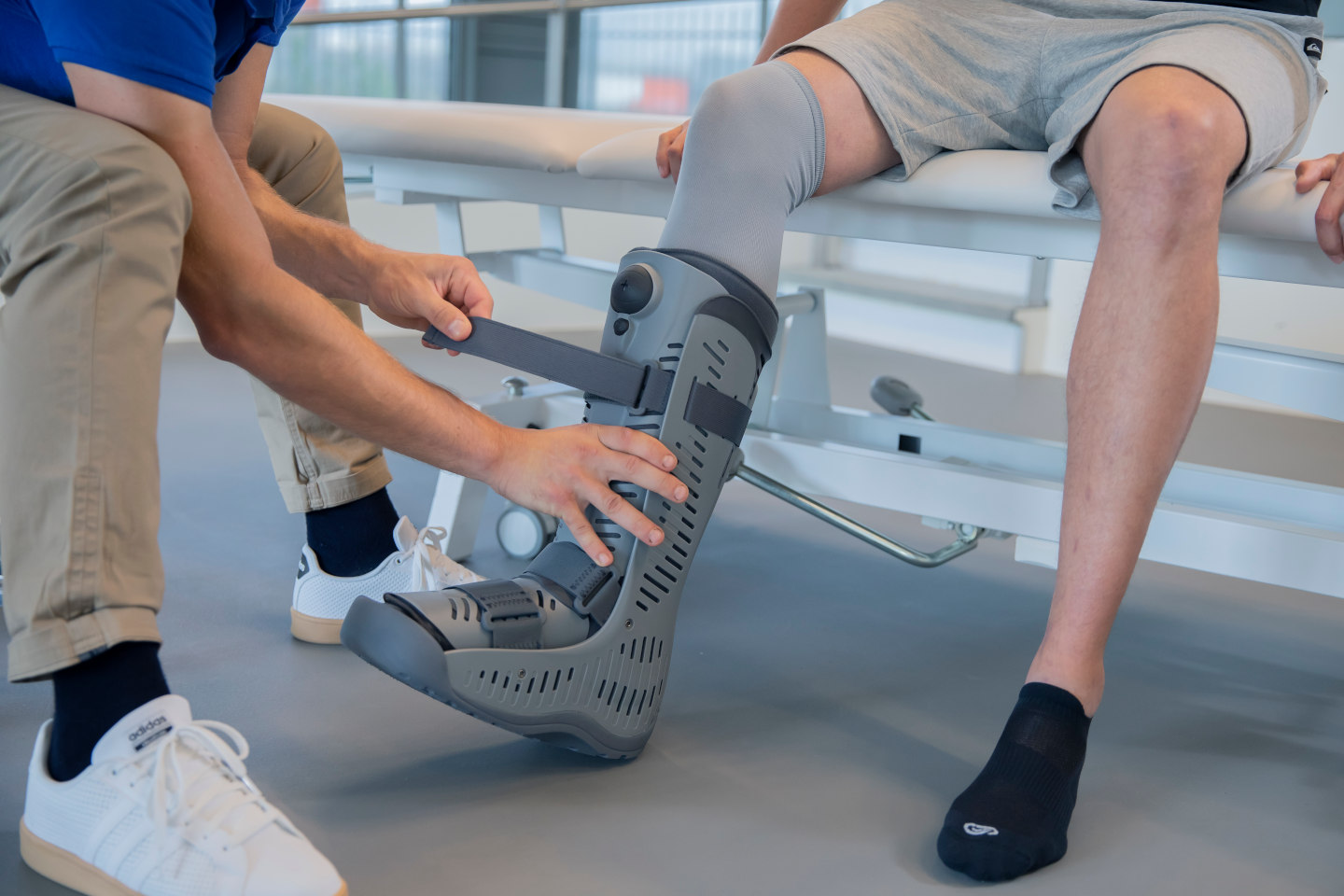
This is the formation of a callus. During this stage, the bone is quite soft and so the injury is vulnerable. It is important to brace the affected area adequately through this stage.
Stage 3
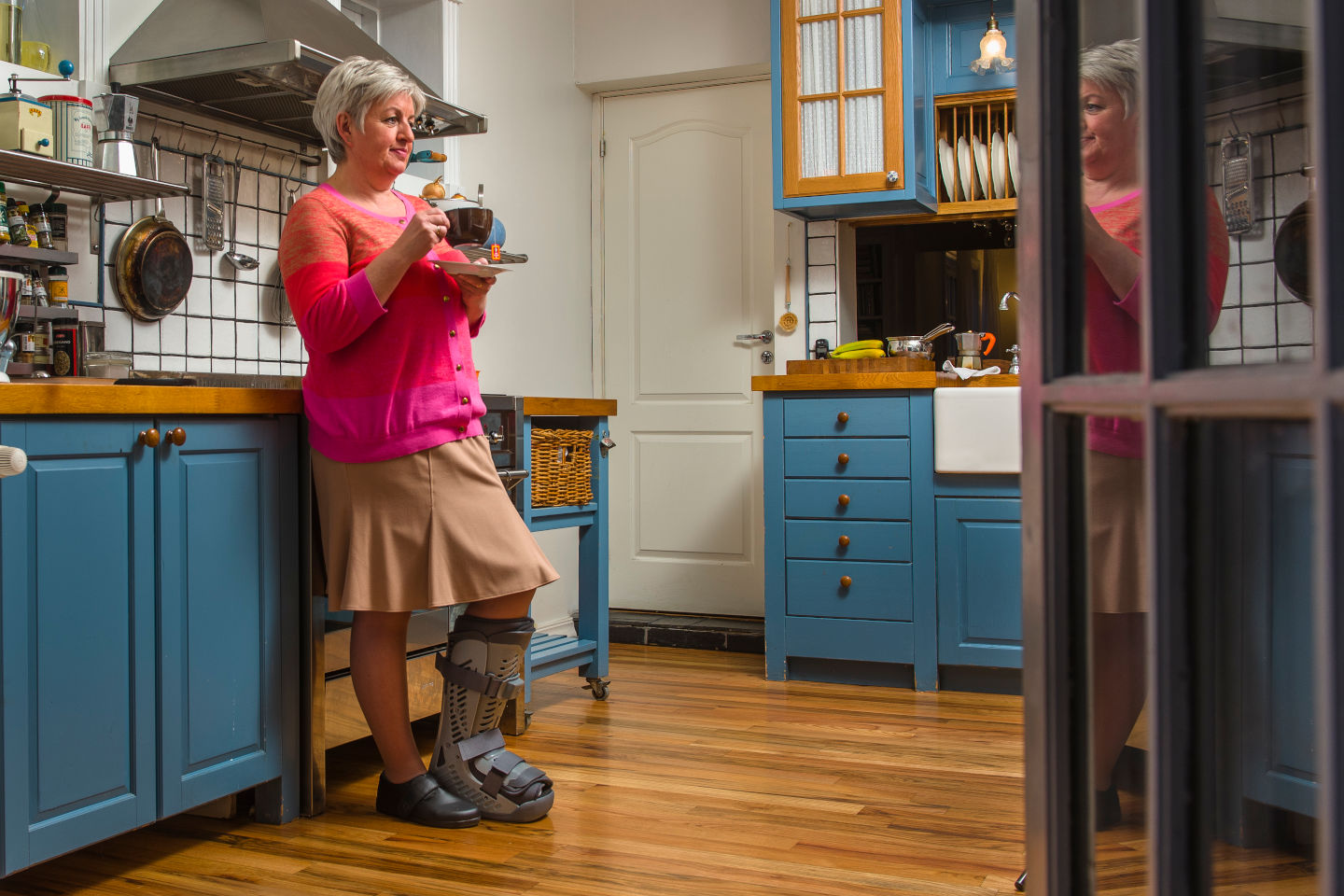
This is the formation of bony callus. During this stage it is important not to put too much force through the bone as it heals
Stage 4
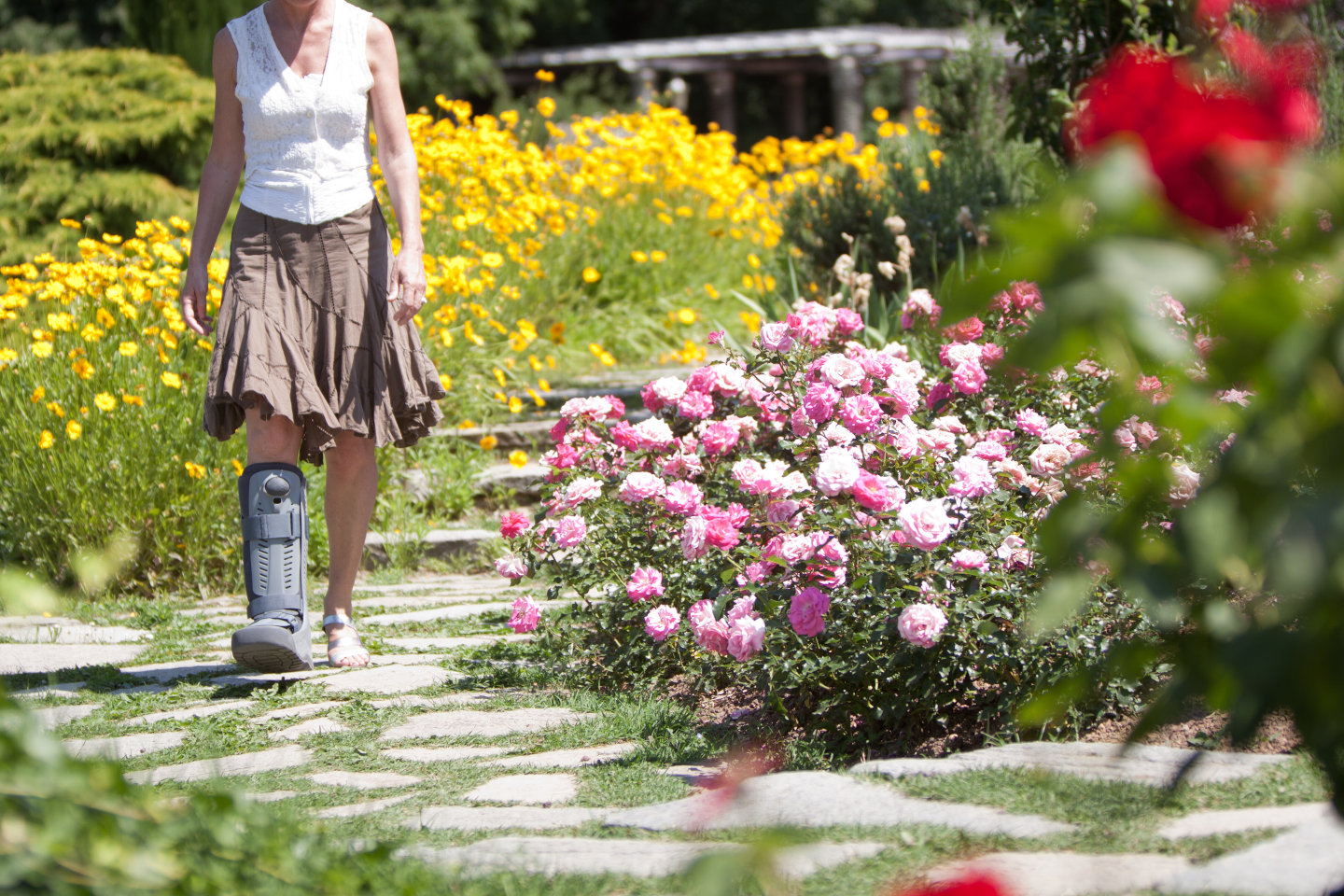
This is known as the remodelling stage, during which the bone recovers and slowly returns to or near its previous strength and is more tolerable to movement.
It is important to respect each of these stages to avoid limiting the recovery or creating a lasting deformity in the bone. Your Orthotist will guide you on this.
The healing process would generally take about six weeks, depending upon the exact nature of the injury, and assuming the regeneration process is not compromised by other factors.
Choosing the Correct Moon Boot
It is important to have an Orthotist involved with selecting and fitting a moon boot properly. There are several reasons for this:
- The wrong moon boot/fitting can cause referred pain in other parts of the body, namely lower back pain
- There are different types of moon boots with different characteristics for different situations (for example the VACOped boot with special vacuum technology is ideal for Achilles ruptures)
- Not all moon boots are high-quality products, we do not recommend people purchase moon boots from the internet, for example
Please note that industry best practice indicates that it is not appropriate to hire a moon boot (according to Therapeutic Goods Administration (TGA), Department of Health, Australia).
Each boot needs to be selected and carefully fitted for the individual.
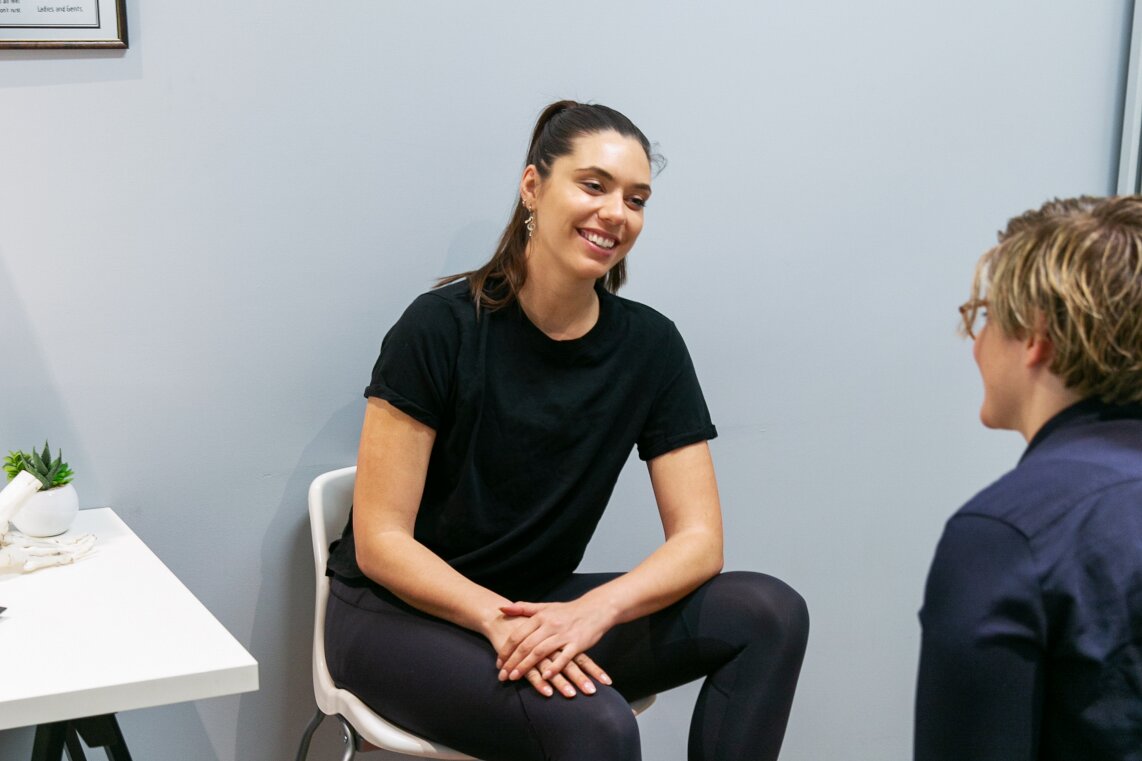
Starting with Orthotics Plus
Clients do not require a referral to get started with Orthotics Plus. We do, however, often have patients who are referred to us by their GP. When requiring a moon boot, details of an existing diagnosis from a doctor, surgeon or specialist are helpful.
If someone has sustained an injury, Orthotics Plus is generally involved quite early in the process. We aim to facilitate same-day appointments whenever appropriate so that the client can have the support of the moon boot as early as possible.
When a moon boot is prescribed, we can also supply and fit the boot on the spot, we have an inventory of equipment at our clinics.
Follow up support will include subsequent appointments with our team, which generally take place within three to four weeks. This will depend upon the individual and the nature of their injury.
In cases of complex injury, we often work in conjunction with GPs or Orthopaedic Surgeons. We also make recommendations to GPs, Physiotherapists, specialists as well as x-rays or imaging that may be required.
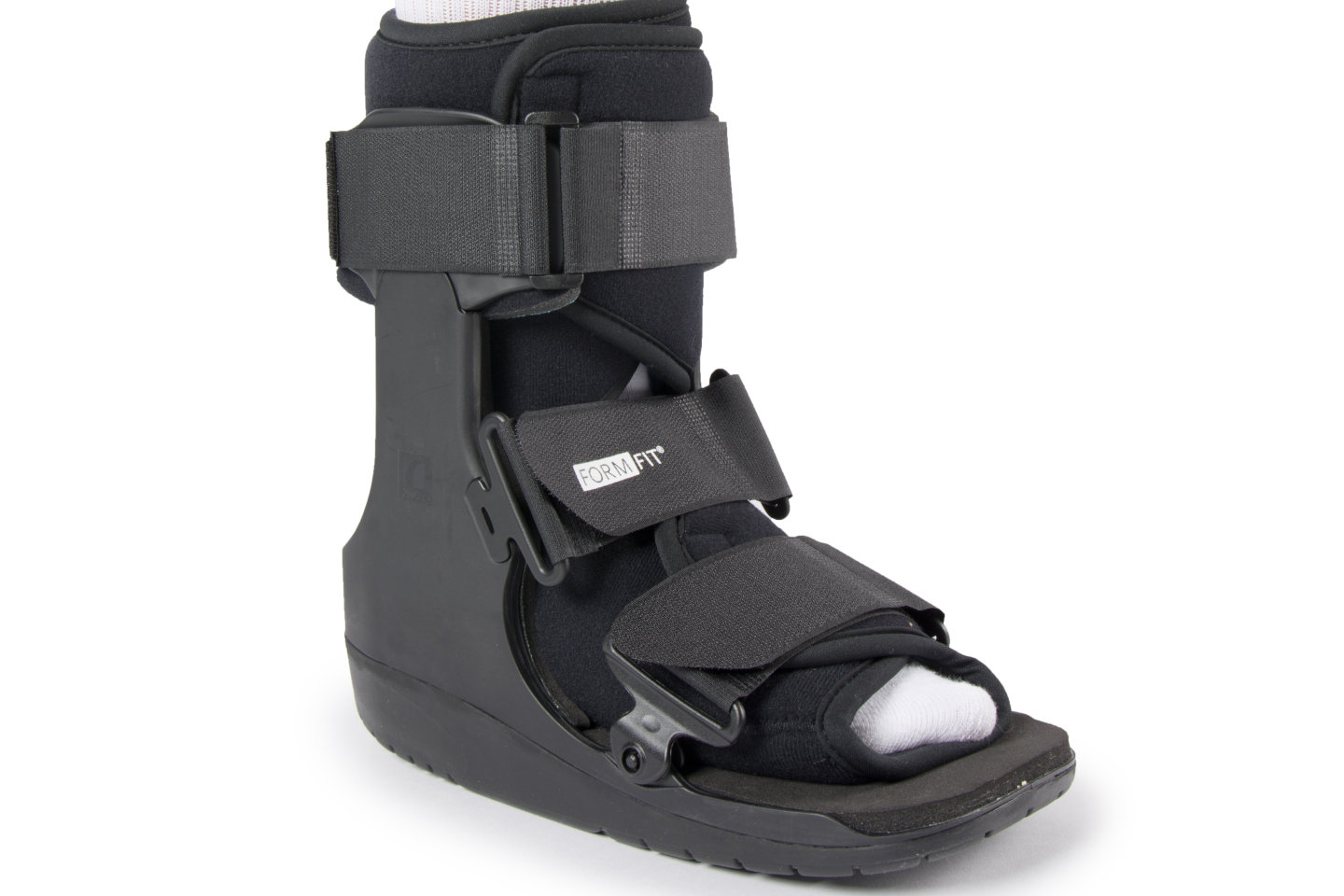
Moon Boot FAQ
Compared to a cast, a moon boot is considered a modern, comfortable option, it has two primary benefits over a cast:
- It allows the patient to weight-bear on the affected leg
- It can be removed easily as needed (i.e. for showering and cleaning)
Please note, people may be suitable for a moon boot may not be suitable for a cast and vice versa. So there are different indications at times.
At Orthotics Plus our staff can provide expert guidance on which moon boot is the most appropriate. We also take the time to fit the boot properly, which is very important.
We support our clients with information so that they can feel comfortable and confident throughout their recovery.
We also have well-established relationships with specialists so that we can connect our clients to other experts swiftly whenever this is appropriate.
Our experience and expertise, together with our holistic and compassionate approach, means we provide a very high standard of care to all our clients.
Please use our referrals page or contact us to get started.
At Orthotics Plus whenever we fit a client with a moon boot we also educate them as to how to best use the boot.
This will include written information about:
- How often (or for how long) they need to wear it (this will depend upon the nature of their injury)
- Whether they need to wear it overnight
- How to remove it and refit it around activities such as showering
- How much weight they can put on it
- Information about any gait aids that may be relevant
We also discuss how to walk comfortably while wearing the boot. This includes guidance on how to establish a good heel to toe rolling motion for each step. This motion promotes an even distribution of pressure across the foot while walking.
We often suggest wearing a chunky-soled shoe on the contralateral side. We can also arrange for a device called an even-up, which slips over the other shoe in order to better align the client’s hips and even out their gait.
We will often fine-tune a moon boot fitting with the application of heel wedges into the opposite shoe, to ensure the hips are level and walking is as natural as possible.
Washing the moon boot is not recommended because the internal liner is set up in the correct position for the client.
We recommend wearing a sock underneath the boot so that the boot itself stays clean and will often provide patients with several stockings at no extra cost.